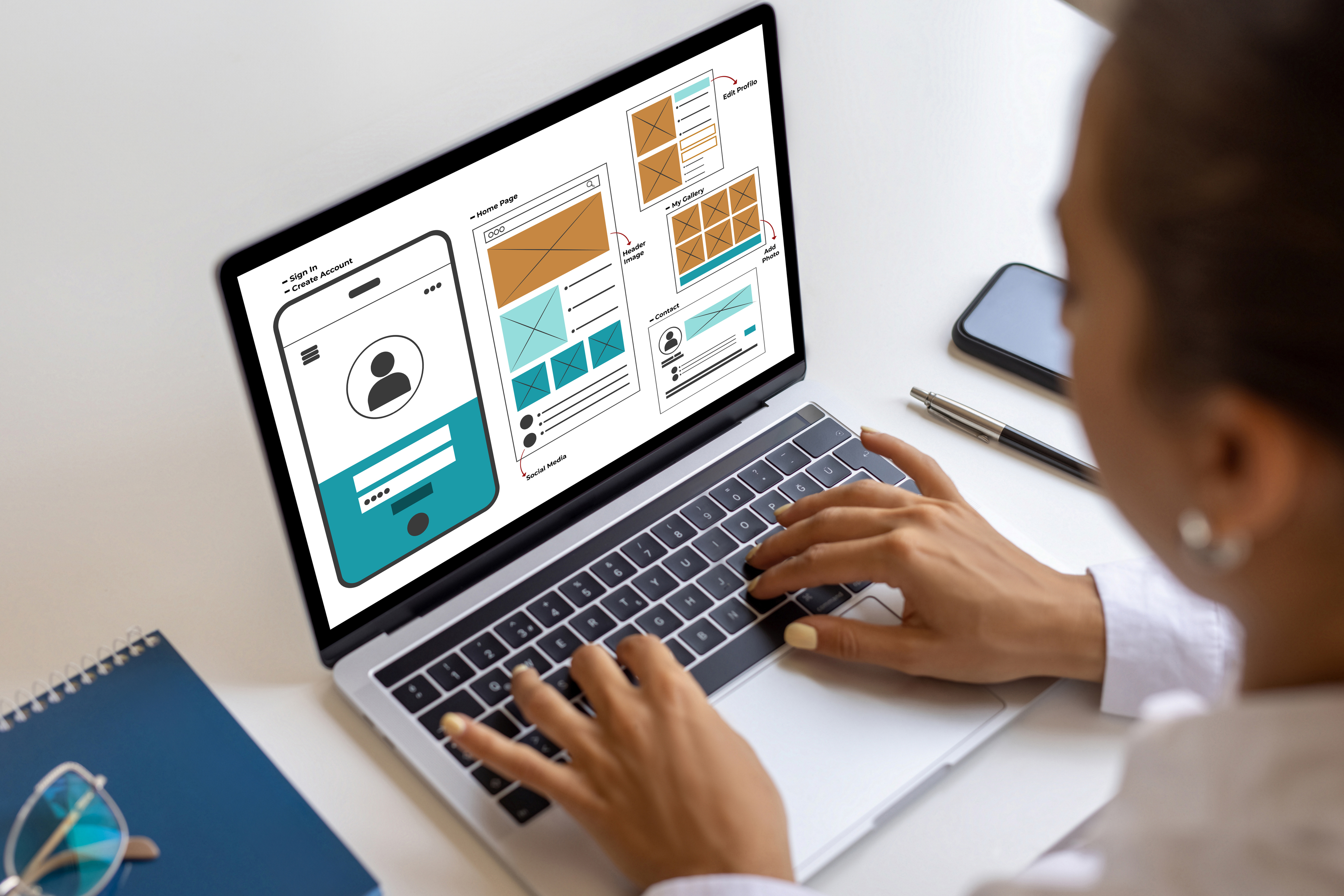
Using rapid prototyping, that is driven by design thinking, L&D can give a concrete form to a rough idea, get stakeholder buy-in, improve the quality of instruction before large-scale implementation, and ultimately optimize learning outcomes and ROI.
The Case for Learning Fast in L&D
Delivering training that aligns with organizational goals and addresses actual learner needs is a pressing challenge for L&D today. As the training needs of a diverse, multi-generational, and hybrid workforce evolve, mastering rapid prototyping for eLearning development is the critical need of the hour.
Rapid prototyping allows L&D teams to visualize, experiment, and test different ideas in a concrete form using simple tools such as PowerPoint, Storyline, or even pen and paper. By identifying and correcting any misalignments early in the initial stages, commonly known as the “fail fast” approach, they can mitigate the risk of launching ineffective programs at scale. Further, by aligning training with learner needs or engagement strategies before committing extensive resources, L&D can save significant time and investments.
Prototyping enables L&D to improve stakeholder participation by providing a clear, firsthand explanation of how the solution will likely work and how design elements contribute to the overall effectiveness of the product. Furthermore, prototyping supports continuous testing, feedback, and refinement, ensuring a final design that is both highly functional and learner-centered.
Early validation through prototyping can benefit some common course design assumptions such as presuming that the course aligns with learners’ current knowledge and needs, the learners would prefer a specific format without actually testing the preferred mode of delivery, the pace of the training is appropriate, without testing whether it’s too fast, too slow, or too challenging, or that the chosen digital tools or platforms will work seamlessly for all users without testing for technical issues or accessibility concerns.
The Different Phases of Rapid Prototyping Process in eLearning
There are different stages of the rapid prototyping process in eLearning that are intentionally structured as low-cost phases, enabling quick pivoting without investing heavily in each step.
Usually, the prototyping process begins with the Ideation phase. Here L&D teams brainstorm and explore a wide range of ideas, focusing only on conceptualizing different possibilities. Moving into the Design phase, L&D uses simple tools to create mockups and more refined versions of the idea. In the next stage of Testing, L&D presents the eLearning prototype to the stakeholders to spot flaws, seek feedback, and identify areas for improvement. At this stage the prototype is still a rough version, therefore testing costs still remain low. In the Feedback phase, L&D gathers insights from real users and adjusts the design for better alignment with user expectations. Finally, in the Iteration phase, L&D refines the eLearning prototype based on the overall feedback to move closer to the final product with minimal cost and effort.
Benefits of Prototyping in eLearning Content Development
The iterative process of prototyping helps optimize learning outcomes before large-scale implementation to improve ROI. Some benefits of prototyping in eLearning content development include:
- Creative Exploration: Encourages out-of-the-box thinking, allowing designers to freely explore innovative content ideas in a low-risk environment and identify the most effective ones to engage learners.
- Early Problem Detection: Helps quickly identify potential design flaws and make adjustments before investing significant resources in a full-scale rollout, preventing costly and time-consuming fixes later.
- Iterative Design: Supports continual refinement and improvement of the learning program through multiple cycles of testing, feedback, and user input.
- Resource Efficiency: Streamlines the development process, making it more resource efficient by preventing time and money investment in ideas that won’t work.
- Stakeholder Engagement: Involves key stakeholders early in the process for feedback and buy-in, creating a more collaborative and effective learning solution.
- Expectation Setting: Establishes clear expectations by providing stakeholders with a preview of the course early on to see the direction and design in a tangible form and validate assumptions about the content, structure, and delivery methods before the full rollout.
- Design Flexibility: Allows making quick adjustments without the need for major revisions. Being low-cost and incomplete, prototyping provides the freedom to explore changes without significant time or resource investment.
How to Develop eLearning Prototypes for Learning Programs
Following a stepwise procedure to develop eLearning prototypes ensures minimum errors and efficient resource allocation. A systematic approach to developing eLearning prototypes includes:
- Defining Goals and Objectives: Establish a clear purpose for the eLearning prototype to ensure alignment with the overall learning strategy. Focus on core questions and the specific needs of learners to design relevant content and learning experiences.
- Choosing the Fidelity Level: Select an appropriate fidelity level based on project stage and audience to ensure the eLearning prototype is developed with the appropriate detail and functionality for its intended purpose. Early-stage prototypes may have low fidelity, such as storyboards for early ideation, that focus on basic concepts. Whereas the later stages may require higher fidelity, such as using authoring tools and apps, for more realistic simulations.
- Creating the Prototype: Create the eLearning prototype using selected tools and incorporating essential content, features, and interactions that reflect the key learning objectives. Focus on elements that directly impact the learner’s experience to develop a functional but not fully polished prototype.
- Test and Gather Feedback: Test the eLearning prototype by sharing it with stakeholders and a sample of learners. Gather feedback using open-ended questions to encourage detailed responses on its clarity, usability, and engagement.
- Iterate and Refine: Use the feedback gathered in the step above to identify areas of improvement and refinement of the design. Undertake multiple rounds of testing and adjustments for continuous improvement and optimization of the learning experience and to reach closer to the final, polished version.
- Document and Share: Document and share the feedback and iterations throughout the prototyping process to maintain transparency and keep all stakeholders informed. Use this documentation as a valuable reference for future improvements, tracking progress, and to ensure consistency in design decisions.
- Validating with Learners: Conduct usability or A/B testing to validate the eLearning prototype with learners and confirm the effectiveness of the design decisions. Use this final testing phase to ensure that the content, interactions, and structure resonate with the target audience and meet learning objectives.
- Implementation and Launch: Use the refined eLearning prototype to transition it into the final learning product, ensuring that all elements are polished and ready for launch. Continue monitoring learner feedback even after implementation to assess the program’s effectiveness, identify areas for further improvements, and maintain the program’s relevance over time.
How AI will Further Enhance Rapid eLearning Prototyping
Driven by the power of AI, L&D stands at the cusp of a significant transformation. AI is not only speeding up the design and development process, but also enhancing rapid eLearning prototyping by automating content generation, personalization, and testing. AI-driven analytics provide real-time feedback for continuous optimization and quicker iterations of prototypes. And, with Generative AI becoming more embedded in L&D tools, the speed and scale of rapid eLearning prototyping is becoming transformative. Here’s a quick snapshot of how AI is accelerating the rapid eLearning prototyping:
- Quick Content Creation: AI automates eLearning content generation, including text, multimedia, and learning modules, enabling L&D to prototype faster, possibly in a fraction of the time spent earlier.
- Predictive Insights: AI-driven predictive analytics analyzes patterns in user behavior and content interaction to assess learner engagement potential, enabling L&D to identify the elements that are most likely to resonate with learners and optimize prototypes early.
- Smart Feedback Interpretation: AI analyzes learner responses in real time, detecting emotional cues and preferences to provide valuable insights for refining prototypes, thereby facilitating data-driven adjustments for improved learner experience and effectiveness of the eLearning prototype.
- Seamless Iteration: AI-driven automation streamlines the revision process. By quickly implementing changes based on feedback, it allows L&D to make adjustments efficiently and frees up time for designers to focus on strategic improvements.
Conclusion
Rapid prototyping for eLearning development is an important strategic tool for delivering effective eLearning programs and optimizing ROI. By facilitating testing of emerging designs and refining ideas before expensive implementation, it allows L&D teams to explore creative ideas, identify potential flaws early, and make quick adjustments, for greater resource efficiency.
With a systematic approach of defining goals, selecting fidelity levels, and gathering feedback, eLearning prototypes establish clear expectations and ensure alignment with learner needs. Furthermore, through iterative design that is based on real-time feedback from stakeholders and learners, eLearning prototypes support continuous refinement of training content and ensure a more engaging and effective learning experience.
The growing adoption of AI and generative AI in L&D will further enhance rapid prototyping by automating content creation, providing predictive insights, and enabling smarter feedback analysis. This combination of eLearning prototypes and AI-driven tools will significantly accelerate the development process, making it more flexible with a greater focus on creating impactful learning solutions that help drive ROI.



